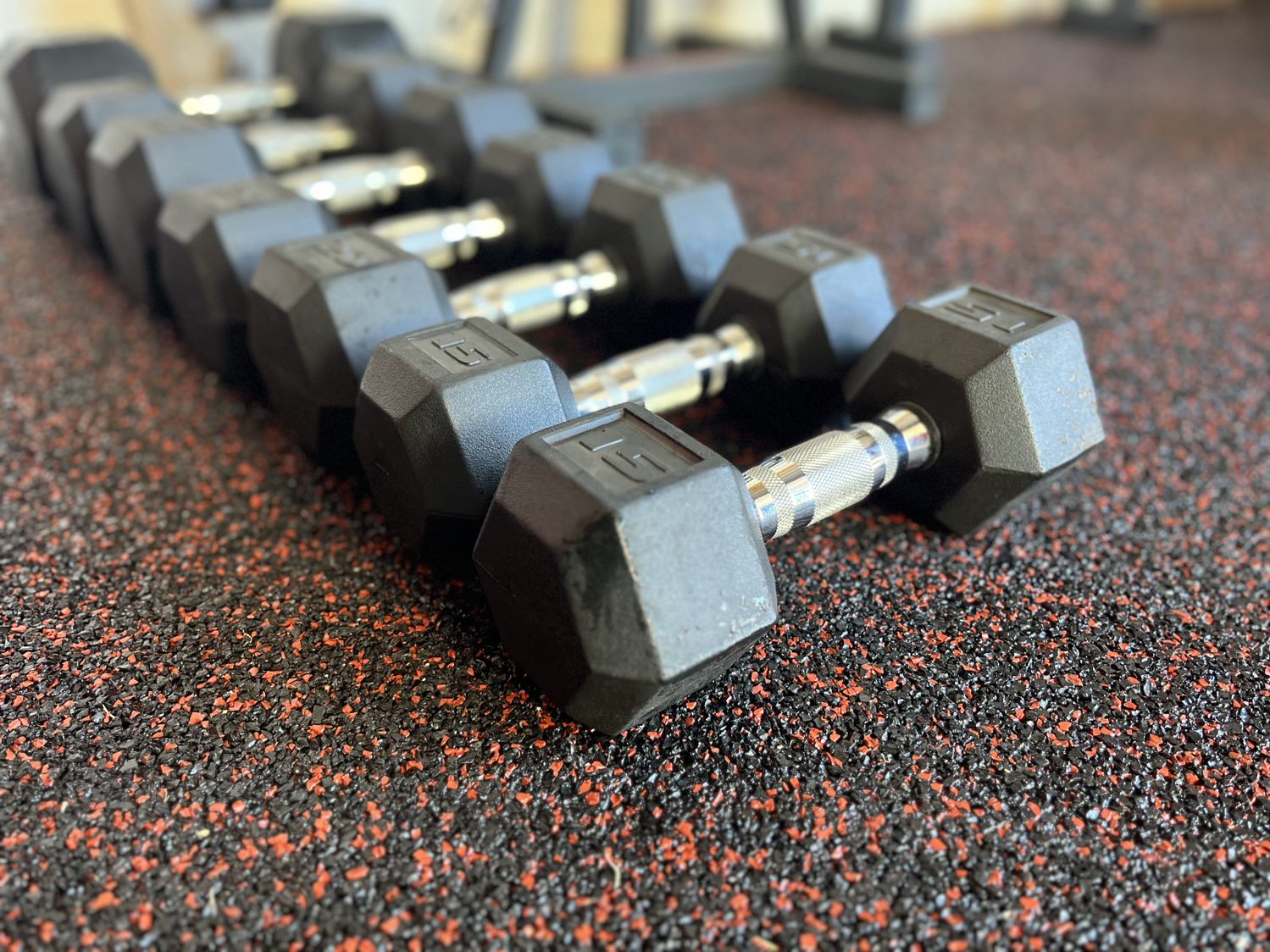
Gym flooring serves two purposes. It provides padding to make floor-based exercises more comfortable and helps protect the floor from damage caused by heavy exercise equipment.
Two popular gym flooring options are rubber and foam. Each option has benefits and downsides when it comes to cost, durability and physical properties. Here we compare foam vs. rubber gym flooring to help you decide which option might best suit your home or garage gym.
What Is Rubber Gym Flooring?
Rubber flooring is popular in commercial gyms and is a good option for garage gyms because it’s extremely durable and has good noise-insulating properties. If you’re a powerlifter or an Olympic lifter who’s going to be dropping heavy weights as part of your workouts, rubber is a good choice.
Types of Rubber Flooring
Rubber flooring comes in a few different forms. Many commercial gyms opt for pour-in-place flooring. This type of flooring is quick to install, lasts for years, and can withstand heavy use.
It’s also possible to get rubber gym flooring tiles or roll-out mats. These flooring options are better suited to home or garage gyms because you can DIY them. However, they’re less durable. Because both tiles and roll-out mats have seams, they can be an issue in wet or humid environments where moisture could seep into the subfloor.
Pros of Rubber Gym Flooring
Rubber gym flooring has several benefits:
- Highly durable: Wet-pour rubber floors can last for years.
- Good shock absorption: Rubber is incredibly durable and can withstand repeated impacts from dropped weights or the use of heavy exercise equipment.
- Slip resistant: Textured rubber is a good choice for safety flooring where slip resistance is important.
- Low maintenance: Rubber is easy to clean and requires little care.
What Is Foam Gym Flooring?
Foam is an incredibly popular gym flooring option because it’s inexpensive, widely available and easy to work with. If you’re setting up a gym in your spare room and want some flooring for calisthenics or to protect your floor from scratches and dents, foam tiles are a potential option.
Types of Foam Flooring
The most common type of foam flooring is interlocking tiles. These can be found in a variety of styles and colors, with thicknesses ranging from 10mm to 50mm. Tiles between 10mm and 20mm in thickness are suited for general gym use. Thicker tiles are more commonly seen in martial arts facilities to provide cushioning for people who will be thrown to the ground or are spending a lot of time on the floor.
Roll-out foam mats are similar to interlocking jigsaw mats but come in long, thin strips. They’re easy to lay out and put down and are well-suited to dual-use rooms. In addition, the way roll-out mats overlap helps protect against fingers or toes getting caught in the gaps — something that can be an issue with jigsaw mats.
Pros of Foam Gym Flooring
While foam flooring isn’t as durable or impact-resistant as rubber flooring, it has several benefits:
- Soft and comfortable: Foam gym mats are soft, which means they’re comfortable for people doing a lot of floor-based exercises.
- Light and easy to handle: It’s easier to cut foam mats down to size, and these mats are easy to move around if your home gym is also used for other purposes.
- Inexpensive: Interlocking mats are inexpensive, so they may suit someone looking for a flooring solution for a home gym that only sees occasional use.
Comparative Analysis: Rubber vs. Foam
So, in the battle between rubber vs. foam gym flooring, which is the winner? It depends on your budget and the type of gym you’re setting up. For a versatile and reasonably priced gym flooring option, consider Softroc rubber gym flooring.
Our flooring offers a balance of features:
- Durability: Softroc rubber flooring can withstand heavy weights and bulky exercise equipment.
- Comfort and shock absorption: Designed with exercise in mind, Softroc gym flooring protects your joints during high-impact exercises.
- Safety: Foam tiles may bow or shift, leading to tripping hazards and frequent replacement, while Softroc provides a smooth, safe surface.
- Aesthetics and Design: Foam tiles are more limited on color and design choices. With Softroc, you have a wide range of customization options to perfectly complement your home.
- Easy to care for: Cleaning this flooring is simply a matter of sweeping or mopping the floor from time to time. A little effort can keep your gym floor looking like new for years.
- Easy to install: Enjoy a professional-looking gym floor in as little as 1 day. Our team can get your home gym up and running with minimal disruption.
Protect Your Body and Home With Gym Flooring
Gym flooring is more than just cosmetic; it protects you and your property. Whether you choose rubber or foam flooring for your gym is a matter of personal preference and may depend on your budget and intended purpose.
Softroc rubber gym flooring is a versatile option that suits a variety of use cases and can be installed quickly. If you’re considering building a gym, contact us today to learn more about our residential and commercial flooring options.